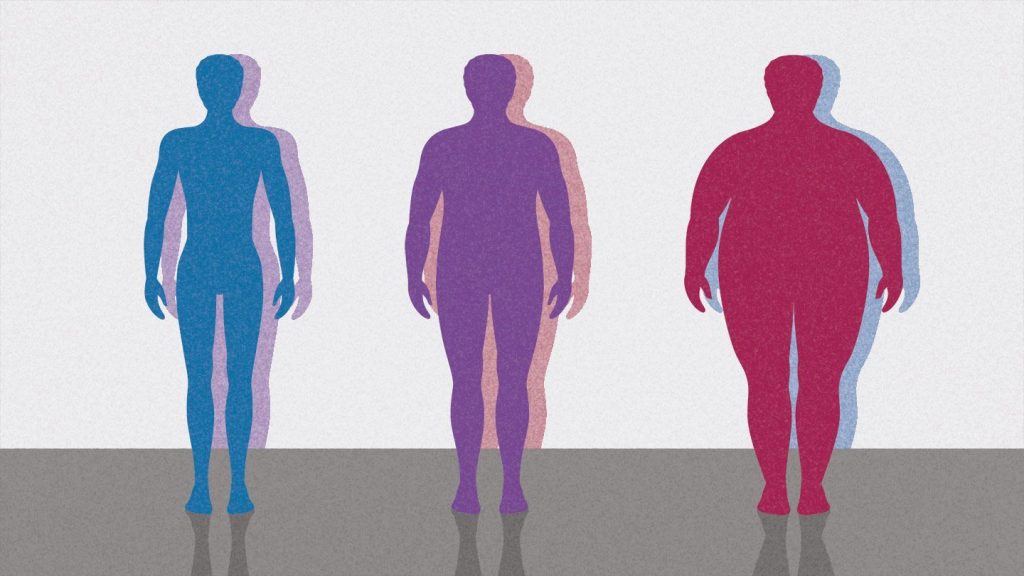Quick guide on Metabolic-associated fatty liver disease.
According to researchers, the prevalence of metabolic-associated fatty liver disease is sharply rising in the US.
Although there are other causes, experts say heredity and fat are the two main contributors to the disease. They claim that a balanced diet and regular exercise can help lower the risk of contracting the illness.

The most common cause of liver disease worldwide and one that is notably rising in the US is metabolic-associated fatty liver disease (MAFLD), formerly known as nonalcoholic fatty liver disease.
That is supported by a study that was presented today at ENDO 2023, the annual conference of the Endocrine Society.
Researchers examined data for 32,726 National Health and Nutrition Examination Survey participants in their findings, which have not yet been published in a peer-reviewed journal.
They gathered health data between 1988 and 2018.
The investigators contrasted rising MAFLD rates with rising obesity rates. They claimed that
- From 16% of participants in 1988 to 37% in 2018, there has been a 131% increase in MAFLD.
- From 23% in 1988 to 40% in 2018, there was a 74% increase in the prevalence of obesity.
MAFLD risk factors
Prior to this, medical experts believed that obesity was the main risk factor for MAFLD.
Because MAFLD grew more quickly than fat, the researchers hypothesised that there must be additional risk factors, such as diabetes and hypertension.
The incidence rate for each of the three studied population groups considerably rose during the course of the study:
- Whites: 133%
- among Mexican Americans, 61%
- 60% of Blacks
Mexican Americans consistently had a greater rate of MAFLD than the general population did over the course of the study.
Dr. Aymin Delgado-Borrego, a hepatologist of KIDZ Medical who was not involved in the study, noted that Hispanics/Latinos have a higher prevalence of MAFLD.
She informed us that because Latinos from Mexico and Central America are more common than those from other countries, it is not appropriate to generalise this to all Hispanics.
But even though Hispanics are more frequently impacted, the study’s key result is that non-Hispanic whites had a more significant rise in prevalence. Once more, this is crucial information that can be used to comprehend the various contributing variables of MAFLD, according to hepatologist Dr. Aymin Delgado-Borrego.
Many forms of fatty liver disease
Alcoholic and nonalcoholic fatty liver diseases are the two main varieties.
Although it’s rare, fatty liver can also occur during pregnancy.
Nonalcoholic fatty liver disease (NAFLD)
Fat deposits in the liver of non-heavy drinkers are known as non-alcoholic fatty liver disease (NAFLD).
NAFLD may be diagnosed if you have too much fat in your liver and no history of drinking heavily. Simple NAFLD is the name given to the disorder if there is no inflammation or other problems.
NAFLD includes non-alcoholic steatohepatitis (NASH). It occurs when inflammation coexists with the accumulation of extra fat in the liver. A physician may identify NASH if:
- Your liver has too much fat.
- You have an irritated liver.
- You’ve never consumed a lot of booze before.
In the absence of treatment, NASH can result in liver fibrosis. This might worsen in extreme cases, leading to cirrhosis and liver failure.
Alcoholic fatty liver disease (AFLD)
Abundant alcohol use harms the liver. The initial stage of alcohol-related liver damage is known as alcoholic fatty liver disease (AFLD). The condition is referred to as simple alcoholic fatty liver if there is no inflammation or other problems.
An example of AFLD is alcoholic steatohepatitis (ASH). It is sometimes referred to as alcoholic hepatitis and occurs when there is an accumulation of extra fat in the liver along with inflammation. A physician could identify Trusted Source ASH if:
- Your liver has too much fat.
- You have an irritated liver.
- You partake in heavy drinking
If left untreated, ASH can result in liver fibrosis. Cirrhosis, a severe liver scarring condition, can cause liver failure.
Acute fatty liver of pregnancy (AFLP)
When too much fat accumulates in the liver during pregnancy, it is known as acute fatty liver pregnancy (AFLP). It’s a dangerous pregnancy issue that is uncommon. Genetics may play a role, albeit the precise cause is uncertain.
AFLP typically manifests during the third trimester of pregnancy. It poses significant health concerns to the mother and child if left untreated.
A doctor will want to deliver your baby as soon as possible if they diagnosis AFLP. After giving delivery, you might require follow-up treatment for a few days.
After delivering delivery, your liver’s health should return to normal in a few weeks.
Relating to fatty liver disease caused by a metabolic disorder
A 2020 study found that the term “metabolic-associated fatty liver disease” refers to a range of liver conditions that are not directly related to alcohol consumption.Published in the World Journal of Hepatology.
One of the main justifications for liver transplants is MAFLD. Currently, it is the main contributor to liver disease worldwide.
Dr. Hillel Tobias, a specialist in transplant hepatology, gastroenterology, and internal medicine at Northwell Lenox Hill Hospital in New York who was not involved in the study, stated that “in 2015 and earlier, [viral] hepatitis was the most prevalent cause of liver disease.”
He explained to us that MAFLD rose to become the leading cause once medications to treat viral hepatitis were discovered.
MALFD symptoms and causes
According to the National Institutes of Health, MALFD is a quiet disease because it exhibits little to no symptoms. Fatigue or soreness in the upper right side of the abdomen may be experienced by those with symptoms.
Genes are one factor in MAFLD. Mexican Americans are thought to be genetically predisposed to the condition, making them more prone to suffer from it.
Additional factors include:
- obesity or excess weight
- glucose intolerance or type 2 diabetes
- abnormal blood fat levels, including high triglycerides, high cholesterol, and low HDL
- Large waist circumference, high triglyceride levels, low HDL, high blood pressure, high blood glucose, or type 2 diabetes are all symptoms of the metabolic syndrome.
Currently, researchers are looking into a potential connection between MALFD and fructose-heavy diets. Additionally, they are investigating any potential impacts of the gut microbiota.
Diet may contribute to MAFLD.
The National Institutes of Health (NIH) reports that research has connected various environmental pollutants to fatty liver disease.
Household chemicals like vinyl chloride, which is used to make PVC, as well as others, may be a factor.
“Some people are predisposed to MAFLD, as shown by the high incidence rate in Hispanics,” Dr. Hillel added.
“This is somewhat explained by the significant dietary differences between Mexico and the United States. The high prevalence may be related to switching from one eating pattern to another because the American diet contains far more carbs. A diet rich in carbs can cause fatty liver.
“COVID-19 may also have contributed to the higher rates because people’s diets changed when they were all confined to their homes,” says the researcher. added Dr. Hillel. Although many people began eating healthier, many still turned to processed and fast foods, which are rich in carbs.
Dr. Hillel stated, “Overall, although I somewhat agree with the results, this was not really a good study. “We need to see the results repeated and supported by additional research,”
lowering the danger of fatty liver illness
MALFD can be reversed if caught early, according to doctors, because the liver is capable of self-repair. However, because it is a silent disease (or at least one that is very quiet), it is not frequently found early.
Imaging exams and blood testing can reveal the disease. Only a biopsy can determine whether the disease has reached a hazardous stage.
Dr. Lisa Ganjhu, a gastroenterologist and hepatologist at NYU Langone Health in New York who was not involved in the study, told us that if it is not treated, it could turn into cirrhosis. However, there are measures to lower your chance of contracting the illness.
According to Caroline Thomason, a nutritionist with a practise in Virginia who was not part in the study, “People can make lifestyle changes that have big returns on their investment.”
Why are there still so many unsolved issues regarding a condition that affects a quarter of the world’s population? questioned Dr. Delgado-Borrego.
In order to prioritise this situation, which at the moment represents a global public health disaster, a global effort is undoubtedly required.
REFERENCES:
- https://www.medicalnewstoday.com/articles/why-metabolic-associated-fatty-liver-disease-is-on-the-rise
- https://www.healthline.com/health/fatty-liver
- https://www.news-medical.net/news/20230617/Study-Metabolic-associated-fatty-liver-disease-is-increasing-among-US-adults.aspx
- https://cardiab.biomedcentral.com/articles/10.1186/s12933-022-01697-0
For Alzheimer’s disease medications that have been suggested by doctors worldwide are available here https://mygenericpharmacy.com/index.php?generic=192


